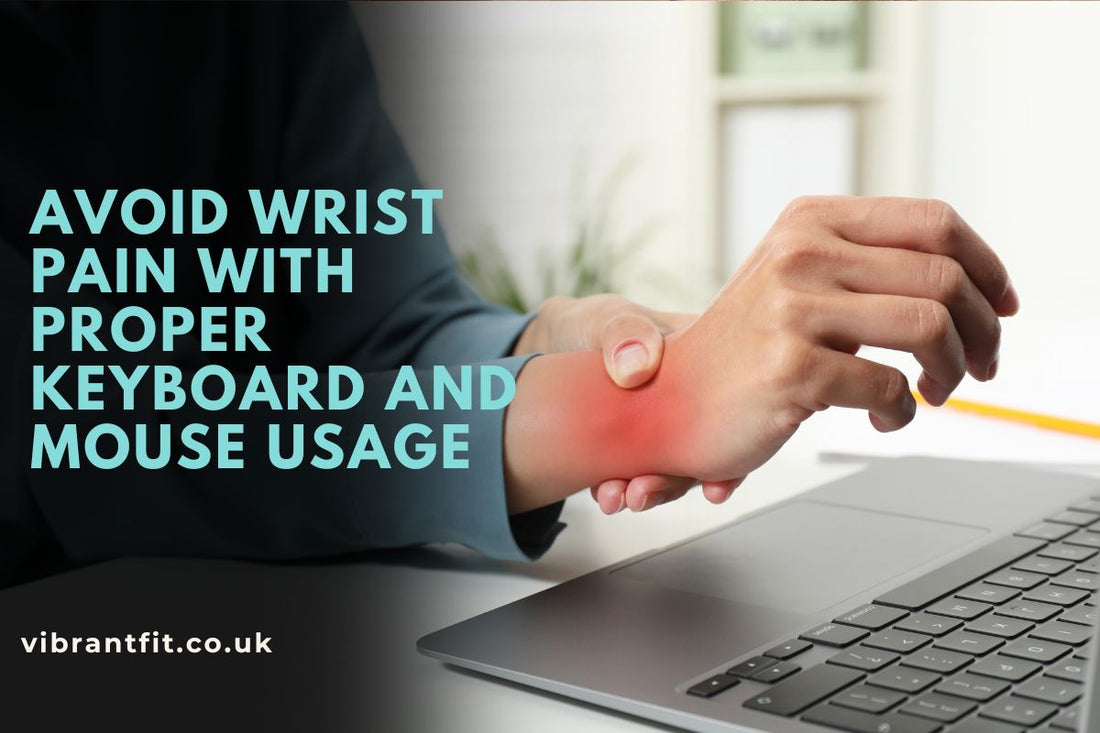
Are You Doing it Right? How To Correctly Use a PC Keyboard and Mouse
Share
Spending more time at your computer is almost unavoidable nowadays. Whether you’re working, chatting with friends, or browsing the web, the keyboard and mouse are your main tools. However, many people don’t think about how they use these devices. Poor habits with your hands and wrists can lead to discomfort and serious health problems. This article will guide you through the right way to use your PC keyboard and mouse. By following simple techniques, you can protect your wrists and type or click with ease.
The Risks of Improper Keyboard and Mouse Use

Using a keyboard and mouse incorrectly can cause problems over time. Many of us were taught how to use a computer but not how to care for our wrists and hands while doing so. Poor wrist positioning and repetitive movements put strain on muscles and tendons. This can lead to:
-
General wrist weakness causing pain and discomfort
-
Repetitive strain injury (RSI), which is a chronic pain condition
-
Carpal tunnel syndrome (CTS), involving nerve compression and numbness
These problems are more than just annoying. They can affect your ability to work or enjoy hobbies. Early symptoms might be mild, such as occasional wrist pain. But without proper care, these issues may worsen and become difficult to treat. Keeping good habits now can prevent these conditions from developing.
Proper Mouse Usage

How you hold and move your mouse matters a lot. Everyone has their own style, but there are ways to reduce wrist strain. Start with a mouse mat. A smooth surface lets your mouse glide easily. This means your wrist does not have to work as hard to move the cursor.
Two main grips work well for most users. The palm grip rests your whole hand on the mouse. Your wrist stays in line with your forearm, avoiding sharp bends. This grip is good for low-sensitivity settings and relaxed use. The claw grip is common with gamers or people who want faster movements. Here, your fingertips hover over the buttons, and your palm touches only the back of the mouse. This gives more control but requires practice to avoid tension.
When scrolling, use your index finger to roll the wheel gently. Avoid keeping your hand locked in one position for too long. Also, take regular breaks to stretch and relax your wrist. If you already have wrist pain or will be using the mouse for many hours, wearing a wrist brace can provide extra support and protection.
Proper Keyboard Usage
Typing is often overlooked as a cause of wrist problems, but it puts plenty of pressure on your hands. Before focusing on your fingers, check your sitting posture. Sit with a straight but relaxed back. Your eyes should be level with the screen about a third of the way down. Position your keyboard close enough so you don’t have to stretch your arms forward.
Using a wrist rest can help keep your wrists from bending upwards. It cushions your hands when you pause, reducing strain. However, avoid pushing your wrists hard against a rest while typing as it may cause more pressure.
Try to use all ten fingers when typing, not just your index fingers. This spreads the workload and allows your fingers to flex naturally. Use the numeric keypad on the right side for entering numbers. It prevents your hand from stretching awkwardly across the keyboard. There are also left-handed keyboards with the keypad on the left if that suits you better.
Keyboard shortcuts save time and reduce repetitive finger movements. Common shortcuts include copying (Ctrl+C), pasting (Ctrl+V), saving (Ctrl+S), and undoing (Ctrl+Z). Learning these helps your fingers work together and lessens keystroke strain.
Wrist braces designed for typing offer different levels of support. Some gently compress the wrist, while others keep it stable to avoid bending. Wearing a brace can feel strange at first, but it protects you from further injury.
Also read : What is Guyon's Canal Syndrome
Conclusion
Looking after your wrists in the long run means you've got to use your keyboard and mouse the right way. If you're slouching or have picked up some not-so-great habits, it can lead to aches and potentially serious problems such as RSI or carpal tunnel syndrome. Just tweaking how you grip that mouse, how you're sitting at your desk, and the way you type can really shield your wrists, making your work setup a whole lot comfier. Try adopting good methods and don't forget to step away regularly. And hey, if you do start feeling discomfort, think about using wrist braces and definitely get some professional opinions. Start building these good habits now, and your hands will thank you later.
